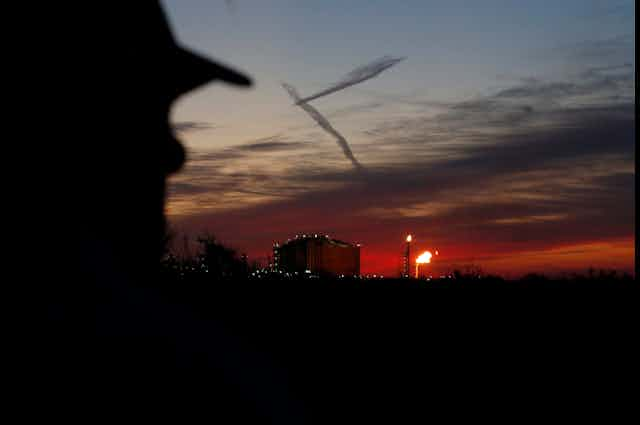After Canada and the United States both announced new policy measures to address oil and gas methane at the COP28 climate summit — just weeks after the EU agreed to extend its methane intensity standards to imported natural gas — it is clear that global policy to address the potent climate-warming greenhouse gas is moving fast.
As policy continues to evolve and demand shifts toward cleaner forms of energy, methane intensity will be key to assessing progress and regulatory efficacy, as well as ensuring the global competitiveness of Canadian product.
Measuring methane
Methane intensity is the quantity of methane released into the atmosphere relative to the amount of oil or gas produced. Measuring it enables comparisons of environmental performance across regions, companies, facilities, production levels, fuel sources and time frames.
With this data we can see where policies and practices are driving down emissions and where improvements are needed.
To effectively target methane emissions and gauge intensity improvements, you need to know how much methane you have and where. However, studies continue to show that we lack adequate knowledge of its magnitude and distribution. Comprehensive measurement to determine methane intensity is key.
When it comes to methane intensity, some producers do a lot better than others. A study by researchers at St. Francis Xavier University’s FluxLab found a 1,000-fold variation in methane intensities among Albertan oil and gas producers.

Since Canada’s oil and gas industry consists of many different production methods and fluid types, methane intensity also varies significantly across regions.
Measurements collected by FluxLab researchers in 2021 show that methane intensity from offshore oil production in Newfoundland is quite low, likely due to a combination of technology advances (for example, flare recovery systems), regulation and high production volumes.
Natural gas produced in British Columbia also has relatively low methane intensities. Another study showed B.C.’s overall methane intensity was lower than 2019 averages for Western Canada and the United States (though, at 0.42 per cent, it’s still higher than the U.S. Inflation Reduction Act’s 0.2 per cent methane fee threshold and the Oil and Gas Climate Initiative target).
Read more: Oil and gas sector's low compliance with methane regulations jeopardizes Canada's net-zero goals
B.C. introduced regulations in 2020 to drive down oil and gas methane emissions, which the B.C. Energy Regulator is now working to strengthen.
Heavy oil regions have the most methane-intensive production in Canada. Certain production methods can have as much as 400 times the methane intensity as offshore production.
A recent study of Cold Heavy Oil Production with Sand (CHOPS) production in Saskatchewan found that methane intensity just during production was four times higher than the mean carbon intensity of Canadian oil over its entire life cycle. Saskatchewan’s overall emissions intensity is also getting worse.
Possible solutions
Fortunately, reducing methane emissions — and by extension, methane intensity — is dirt cheap. A Dunsky report found that a 75 per cent reduction in upstream oil and gas methane emissions would cost as little as $11 per ton of CO₂ equivalent.
That’s far below the federal carbon price of $65 per ton of CO₂ equivalent and rising, as well as carbon capture and storage for oilsands, which could cost between $89-144 per ton of CO₂ equivalent.
Canada’s newly announced amendments to its methane regulations will help drive deep methane reductions, so long as they are meaningfully enforced.
However, to credibly assess outcomes and achieve the reductions we truly need, producers and governments need to have accurate data on oil and gas methane emissions and emissions intensity. In addition:
Following the U.S. Environmental Protection Agency, Canada should develop stronger measurement, monitoring, verification and reporting requirements to generate a more accurate picture of emissions and emissions intensity.
Saskatchewan and Alberta should proceed with regulatory development to update and strengthen their oil and gas methane regulations in a timely manner and follow B.C.’s lead by basing models and targets on aerial survey data.
Energy regulators should apply strong monetary penalties for non-compliance in a consistent and timely manner.
Methane intensity allows various stakeholders to recognize, quantify and base decision-making on important comparisons and trends. It will be a key metric in the global transition to net-zero that will make or break producer competitiveness and, if accurately measured and reported, help governments effectively determine emissions reduction progress and priorities.

